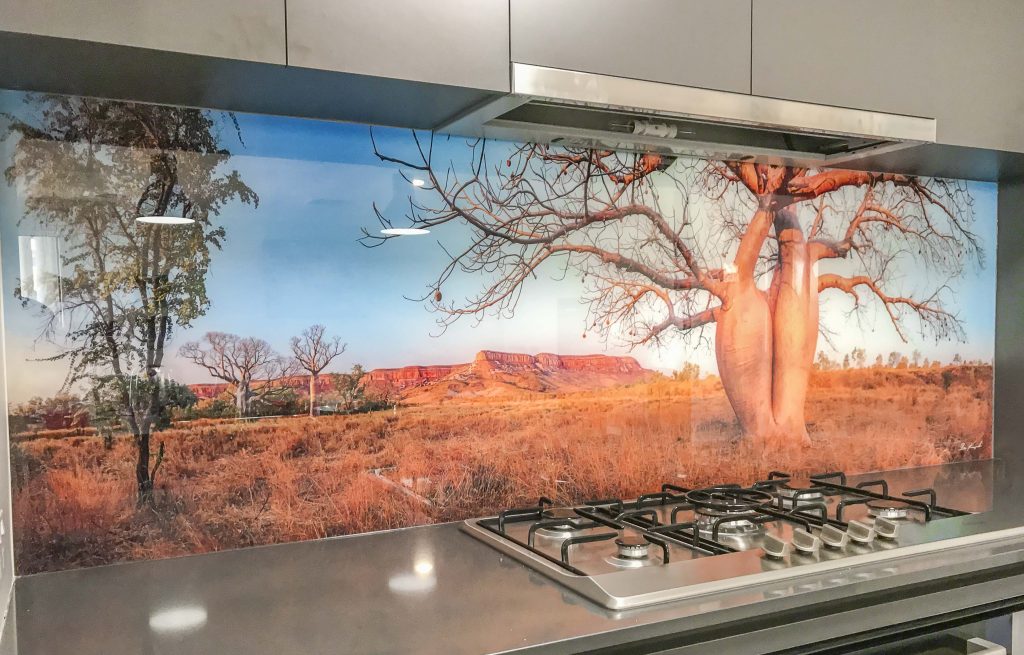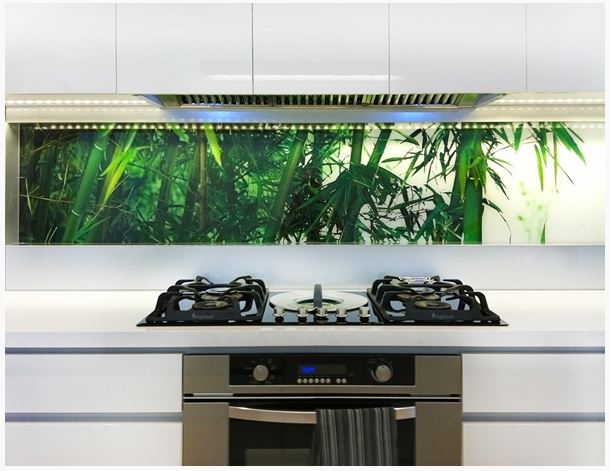
In any kitchen remodeling project, one of the most important decisions you’ll make is how to pair your kitchen benchtops and splashbacks. These two elements play a crucial role in the overall design and functionality of your kitchen, so getting the combination right is essential.
To help you navigate through the process, we’ve put together this comprehensive guide that covers everything you need to know about pairing kitchen splashbacks and benchtops.

Understanding Kitchen Benchtops and Splashbacks
Before we delve into the intricacies of pairing benchtops and splashbacks, let’s first explore what these elements are and their significance in your kitchen.
Your kitchen is not just a place for cooking, but also a space where you gather with family and friends, creating memories and sharing meals. To make your kitchen functional and visually appealing, it is essential to pay attention to every detail, including the kitchen benchtop and splashback.
Different Types of Kitchen Benchtops
When it comes to kitchen benchtops, there is a wide range of benchtop materials to choose from, each with its own unique characteristics and benefits.
Benchtop Material Options
Natural stone benchtops, such as granite and marble, offer timeless elegance and durability. Their natural patterns and colours add a touch of luxury to any kitchen. On the other hand, laminate benchtops provide a budget-friendly option without compromising on style. They come in a variety of colours and patterns, allowing you to achieve the desired look without breaking the bank.
If you’re looking for a balance between durability and affordability, engineered stone benchtops are an excellent choice. Made from a combination of natural quartz and resin, they offer the beauty of natural stone with added strength and resistance to stains and scratches.
For those who prefer a more eco-friendly option, there are also bamboo and recycled glass benchtops available. These materials not only add a unique and sustainable touch to your kitchen but also offer durability and easy maintenance.

Various Splashback Materials to Consider
Similarly, splashbacks come in a vast array of materials, each offering its own set of advantages.
Ceramic tiles are a classic choice for splashbacks. A tiled splashback comes in various colours, patterns, and sizes, allowing you to create a personalized design that complements your kitchen’s style while groutless tiled splashbacks offer a seamless look. Glass splashbacks, on the other hand, offer a sleek and modern look. They are easy to clean and can make your kitchen appear more spacious and bright.
If you’re looking for a kitchen splashback material that adds a touch of sophistication, stainless steel is an excellent option. It is not only durable and hygienic but also resistant to heat and stains.
For those who want to make a bold statement, there are also options like mirrored splashbacks or patterned glass splashbacks and even marble splashback options. These can add a unique and artistic touch to your kitchen, reflecting light and creating visual interest.
Factors to Consider When Pairing Benchtops and Splashbacks
Now that we have a good understanding of benchtops and splashbacks, let’s turn our attention to the key factors you need to consider when pairing them together.
When it comes to designing your dream kitchen, every detail matters. The combination of benchtops and splashbacks plays a crucial role in creating a cohesive and visually stunning space. Let’s explore some additional factors to consider when choosing the perfect pairing.

Colour and Texture Compatibility
One of the most crucial aspects of pairing benchtops and splashbacks is ensuring that their colours and textures complement each other harmoniously. Opting for a cohesive colour scheme and coordinating textures will create a visually pleasing and well-balanced kitchen design.
Consider the colour palette of your kitchen and the overall mood you want to create. Are you aiming for a sleek and modern look, or do you prefer a warm and rustic feel? The colour and texture of your benchtops and splashbacks should align with your desired aesthetic, enhancing the overall ambiance of your kitchen.
Style and Design Aesthetics
Your kitchen is a reflection of your personal style and design preferences, so it’s essential to choose benchtops and splashbacks that align with your overall aesthetic. Consider factors such as the architectural style of your home, the ambiance you want to create, and the level of visual impact you desire.
If you have a contemporary home with clean lines and minimalist design, consider sleek and glossy benchtops paired with a glass or stainless steel splashback. For a more traditional or farmhouse-style kitchen, opt for natural stone benchtops and a subway tile splashback for a timeless and charming look.
Don’t be afraid to mix and match different materials and textures to create a unique and personalized kitchen design. Experiment with contrasting colours or incorporate patterns and textures to add visual interest and depth to your space.
Remember, the key is to create a harmonious and balanced look that reflects your personal style while also considering the practicality and functionality of the materials you choose.

Step-by-Step Guide to Pairing Kitchen Benchtops and Splashbacks
Now that we have covered the critical factors to consider, let’s go through a step-by-step guide to pairing kitchen benchtops and splashbacks.
Assessing Your Kitchen’s Current Style
The first step is to assess your kitchen’s existing style and design elements. Take note of the colours, textures, and materials already present to establish a baseline for your benchtop and splashback selection.
Look closely at the cabinetry and flooring in your kitchen. Are they made of wood, laminate, or another material? Consider the colour and finish of the cabinets (such as timber cabinetry), as well as the type of flooring, whether it’s tile, hardwood, or vinyl. These elements will play a significant role in determining the overall style of your kitchen.
Additionally, examine the colour scheme of your kitchen. Is it predominantly neutral, with shades of white, gray, or beige? Or does it feature bold and vibrant colours? Understanding the existing colour palette will help you choose benchtop and splashback materials that either blend seamlessly or create a striking contrast.
Choosing the Right Benchtop
Once you have a clear understanding of your kitchen finishes and overall style, it’s time to select the perfect benchtop material.
If your kitchen has a modern and sleek design, you may opt for a benchtop material like quartz or stainless steel. These materials offer a clean and contemporary look, with a wide range of colour options to choose from. On the other hand, if your kitchen has a more traditional or rustic style, a natural stone benchtop like granite or marble can add a touch of elegance and warmth.
When considering durability, think about how often you use your kitchen and the level of maintenance you’re willing to commit to. Some materials, like laminate or solid surface, are more resistant to scratches and stains, making them ideal for busy households. Others, like wood or concrete, may require more care and maintenance but offer a unique and natural appeal.
Selecting a Complementary Splashback
With your benchtop chosen, it’s time to find a splashback material that complements it beautifully. Take into account factors like colour, texture and visual impact to ensure a harmonious pairing that enhances the overall style of your kitchen.
If your benchtop has a bold and eye-catching colour, you may want to opt for a more neutral or subtle splashback. This will create a balanced and cohesive look, allowing the benchtop to be the focal point. On the other hand, if your benchtop is more understated, you can choose a splashback with different patterns or vibrant colours to add an eye catching feature to the space.
Consider the texture of the splashback material as well. If your benchtop has a smooth and polished surface, a textured splashback can add depth and dimension. Conversely, if your benchtop has a textured or patterned surface, a smooth and glossy splashback can create a beautiful contrast.
Remember, the goal is to create a harmonious and visually appealing combination between your benchtop and splashback. By considering the existing style of your kitchen, choosing the right benchtop material, and selecting a complementary splashback, you can achieve a stunning and cohesive look that will transform your kitchen into a true centerpiece of your home.

Mistakes to Avoid When Pairing Benchtops and Kitchen Splashbacks
When it comes to designing your kitchen, pairing the right benchtops and splashbacks is crucial. However, it’s equally important to be aware of common mistakes that can hinder the success of your design. Let’s explore some pitfalls you should steer clear of to ensure a flawless outcome.
Overlooking Practicality for Aesthetics
While aesthetics undoubtedly play a significant role in creating a visually appealing kitchen, it’s essential not to overlook the practicality and functionality of your benchtops and splashbacks. These elements need to withstand daily use, including chopping, cooking, and cleaning. Therefore, it’s crucial to opt for materials that are not only visually pleasing but also durable and easy to maintain. Consider other materials like granite or quartz, which offer both beauty and practicality.
Furthermore, think about the specific tasks you’ll be performing on your benchtops. If you’re an avid baker, a heat-resistant material like stainless steel or marble may be a better choice. On the other hand, if you have young children, you might want to avoid materials that are prone to staining or scratching.
Ignoring the Importance of Lighting
Lighting is a key aspect of any kitchen design, and it can significantly impact the appearance and functionality of your benchtops and splashbacks. Consider how natural and artificial lighting interacts with your chosen materials. For example, if you have a dark-coloured benchtop, adequate lighting is essential to prevent the space from feeling gloomy or cramped.
Additionally, think about the reflective properties of your splashback. A glass or mirrored splashback can help bounce light around the room, making the space feel brighter and more spacious. Alternatively, if you have a lot of natural light in your kitchen, you may want to choose a splashback material that adds warmth and depth, such as natural stone or textured tiles.
Neglecting the Overall Kitchen Theme
Creating a cohesive and visually pleasing kitchen involves considering the overall theme and style of the space. Neglecting this aspect can result in a disjointed and visually confusing kitchen. Ensure that your benchtops and splashbacks align with the existing design elements and create a harmonious look.
Start by examining the colour palette of your kitchen. If you have a minimalist and contemporary kitchen, you may want to opt for sleek and monochromatic benchtops and splashbacks. On the other hand, if you have a rustic or farmhouse-style kitchen, natural materials like wood or stone can complement the overall aesthetic.
Additionally, consider the texture and pattern of your chosen materials. If you have a kitchen with a lot of texture, such as exposed brick or rough-hewn timber, you may want to choose a smooth and simple benchtop and splashback to balance the visual elements.
By following this comprehensive guide, you’ll be well-equipped to pair your benchtops and splashbacks successfully. Remember to consider factors such as colour and texture compatibility, low maintenance options, durability, style and design aesthetics.
Whether you are designing a new kitchen or opting for a kitchen renovation, with a thoughtful approach you can create a stunning and functional space that truly reflects your personal style and preferences. For assistance in choosing the right splashback design for your kitchen, contact the experts at Perth Splashbacks.



